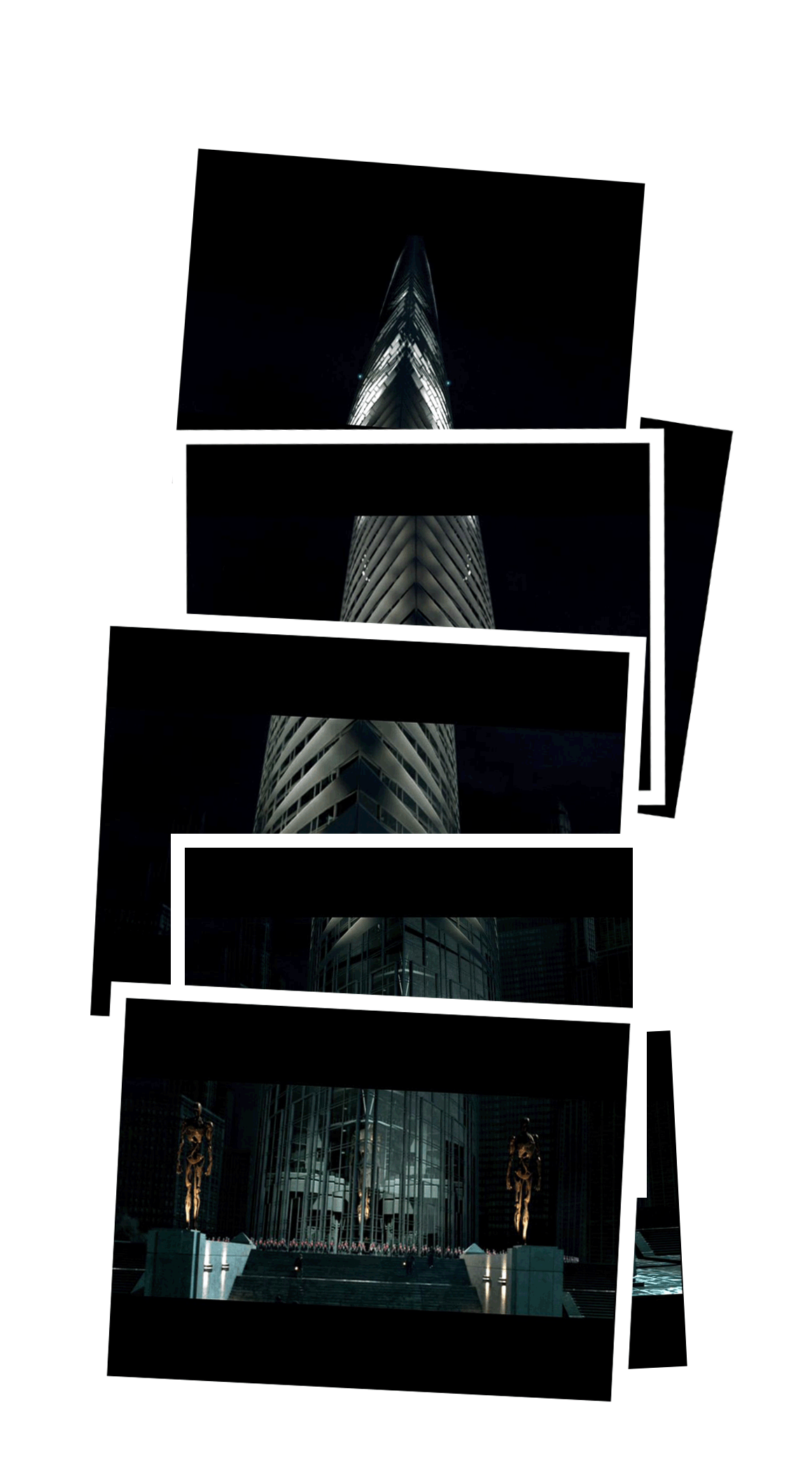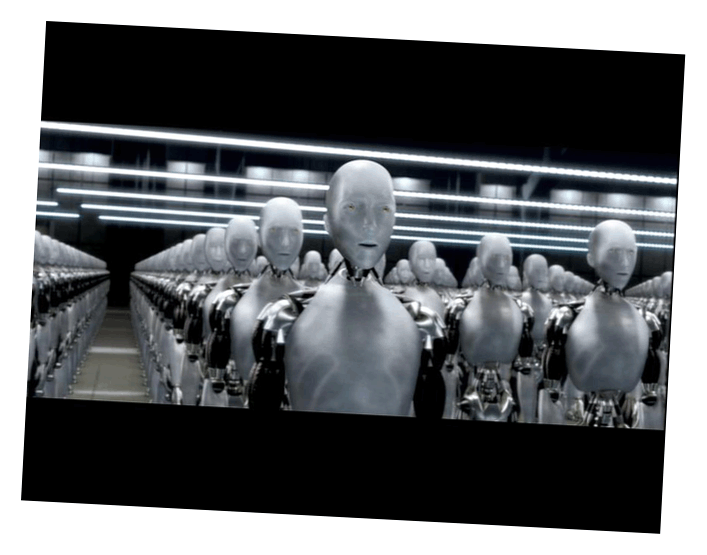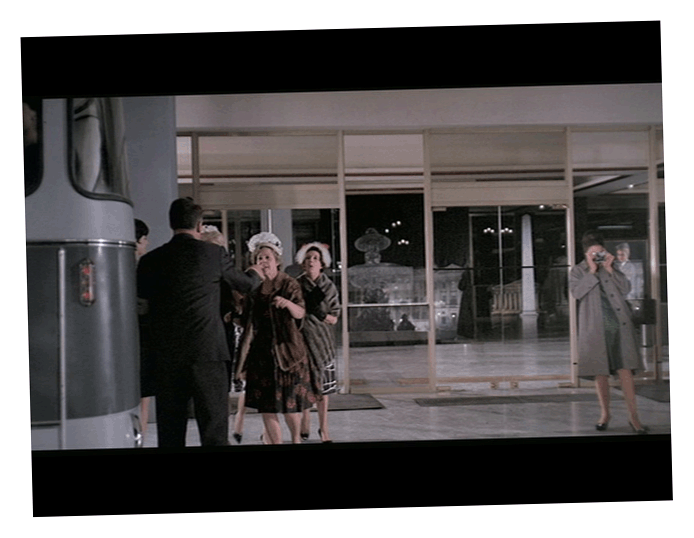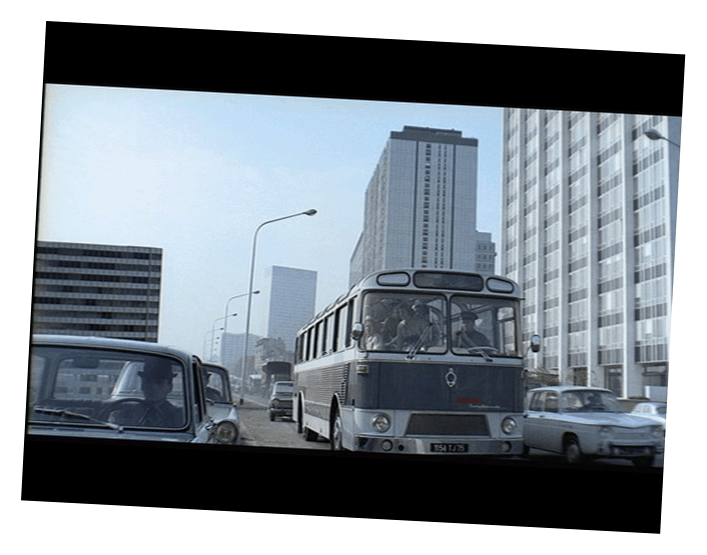

I, Robot


Play Time
A R C H I T E C T U R E
O F T H E F A C E
This idea of the false façade also relates to the socio-political world of Chicago 2035 in the film I, Robot. The film plot centres on the idea of a future world that embraces technology as becoming the only way of living. People rely on the help of humanoid robots to do their everyday tasks. These robots do not have emotions. They have a face, and their own equivalent to human eyes, nose, ears, and mouth, but their outer shell is just a blank façade. Nobody in Chicago 2035 knows how they work inside. The only concern is the convenience these androids can provide. These machines are similar to the architecture of the U.S. Robotics headquarters, which is the corporation that manufactures the robots. Everything is so eerily pristine. The organs of the USR are hidden well beneath the layers of its public face.
Playtime presents a similar environment, but as a criticism of Modern architecture. The character of Monsieur Hulot and the American tourists wander through modern day Paris, seeing all the attractions. The attractions, however, are never those architectural monuments that best describe the Parisian landscape, such as the Eiffel Tower or l’Arc de Triomphe. The characters travel through a Modern Paris filled with Modernist buildings, all of the same style that might be found anywhere else in the world. The blank faces of the buildings confronting the characters speak nothing of the rich culture of the city, or of the buildings’ functions. They serve only to cause confusion, breaking down the very order they try to enforce.